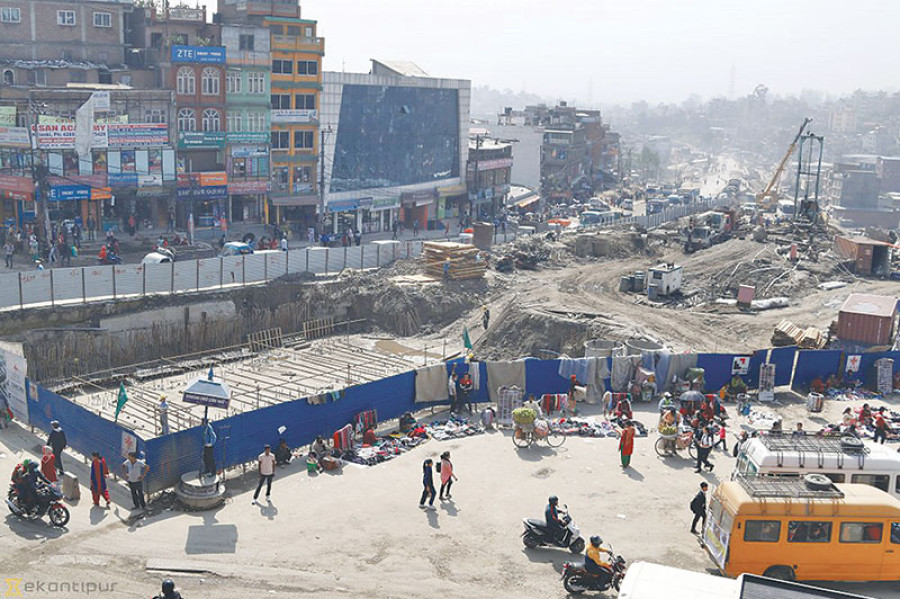Opinion
Urban concerns in Kathmandu
The newly elected government needs to pay attention to developing open spaces in the city
Rapid urbanisation is posing multiple challenges for urban management in the Capital. According to the 2011 census, Kathmandu alone has a population of 17, 44,240 which is more than 2.5 folds of the total urban population in the country. Unplanned and haphazard construction of buildings and lack of compliance with building codes in the city is one of the major challenges in urban management. Public utilities like roadways, open spaces, solid waste management, sewerage system and communication channels have not received sufficient attention.
Pay heed
Open spaces and greenery form a major component of a livable city. In addition to the natural beauty, it promotes healthy environment in the city. In past, the natives of Kathmandu built open spaces like chowks and dewals. Those places were mostly used for social interaction and cultural function by the community. Today these open spaces are rare.
Besides open spaces, well planned road network is another problem. Road expansion in Kathmandu has always been problematic because of unplanned settlement and unplanned city development. The roads here are narrow with poor network function. In addition, parking space is a huge problem. Daily increment in the number of private vehicles is adding traffic congestion in the city. The sufferers are ultimately the general public who fall in the vicious cycle of traffic jams with hasty travel time and are further exposed to air and noise pollution.
Solid waste generation too is increasing annually in Kathmandu. For example, per day solid waste generation was 29.9 metric tons in year 2006/07 which gradually increased to 30.6 metric tons in 2007/08. It reached its peak—318.4 metric tons in 2009/10. Again in 2012/13, it skyrocketed to 457 metric tons per day. Solid waste management system here is fragile. The waste collection and transportation system is in a pitiable state. This could lead to environmental degradation and increase public health problem.
The history of urban planning is not very new in Nepal. It began in the late 1960s. Urban planning was mentioned for the first time in the third national five year plan 1967-1971. Then in 1988, the town development act was publicised. National land use policy 2012 and National urban policy 2007 are the policies for urban management and development in Kathmandu city. In 2017, the Government of Nepal prepared the urban development strategy with the objective of establishing a standard for urban management and urban planning. However, its impact in the real urban area is hard to gauge.
The recent earthquake has become a big lessons for us on disaster preparedness. People were compelled to live in streets going in between the congested buildings with lack of open spaces and very minimal basic facilities for many days. Now it’s urgent to address the proper urban planning in Kathmandu and the emerging cities of the country. The willingness of the policymakers, bureaucrats,and the elected representatives is crucial for upgrading city. Also, the citizens too have a prime role in advocating for development, part taking and supporting the government for executing the development plans.
The way forward
Federalism in the country should not be limited to political discourse but it should aim at enhancing people’s prosperity by providing necessary facilities to the citizen. In the city areas, transportation system should be vibrant. The government should pay attention to providing adequate road infrastructure with proper standard in core cities and in urban areas. Hapahazard road expansion and land acquisition without proper compensation is definitely not the answer. Furthermore, provision and promotion of sustainable and comfortable public transportation system need to be established.
For the management of solid waste in urban areas,establishment of solid waste management unit at municipalities is essential. Community-led waste management will be one of the best strategies. This could involve strong waste segregation (reduce, reuse and recycle) at household level or at the source. If properly managed solid wastes could be the source of income by reuse and recycling methods. Public-private partnership in the waste collection from door to door is another effective strategy for solid waste management in the city area.
The newly elected government also needs to pay attention to developing open spaces in the city. The municipal government can follow or prepare land use planning of city. Land use planning standardises the urban land use in efficient way by safeguarding and respecting the natural resources. The effective implementation of national land use policy could bring out some open spaces in urban area too. As per the building code, at least 5 percent of total land should be left unused while constructing houses or any other structure within Kathmandu city.
Also, the municipal government needs to build up public parks where social interaction takes place. Having beautiful parks with greenery will not only beautify the city but will also improve the health of people. The ultimate time has come to address these urban concernsbefore any disaster happens. Readiness to tackle disaster begins with our own effort. Politicians should look beyond their vested interests and provide straight forward input for city development. It’s high time we came out of the vicious cycle of uncertainty of urban development and make the city livable for posterity.
Ghimire is working at ISET-Nepal




 8.12°C Kathmandu
8.12°C Kathmandu









